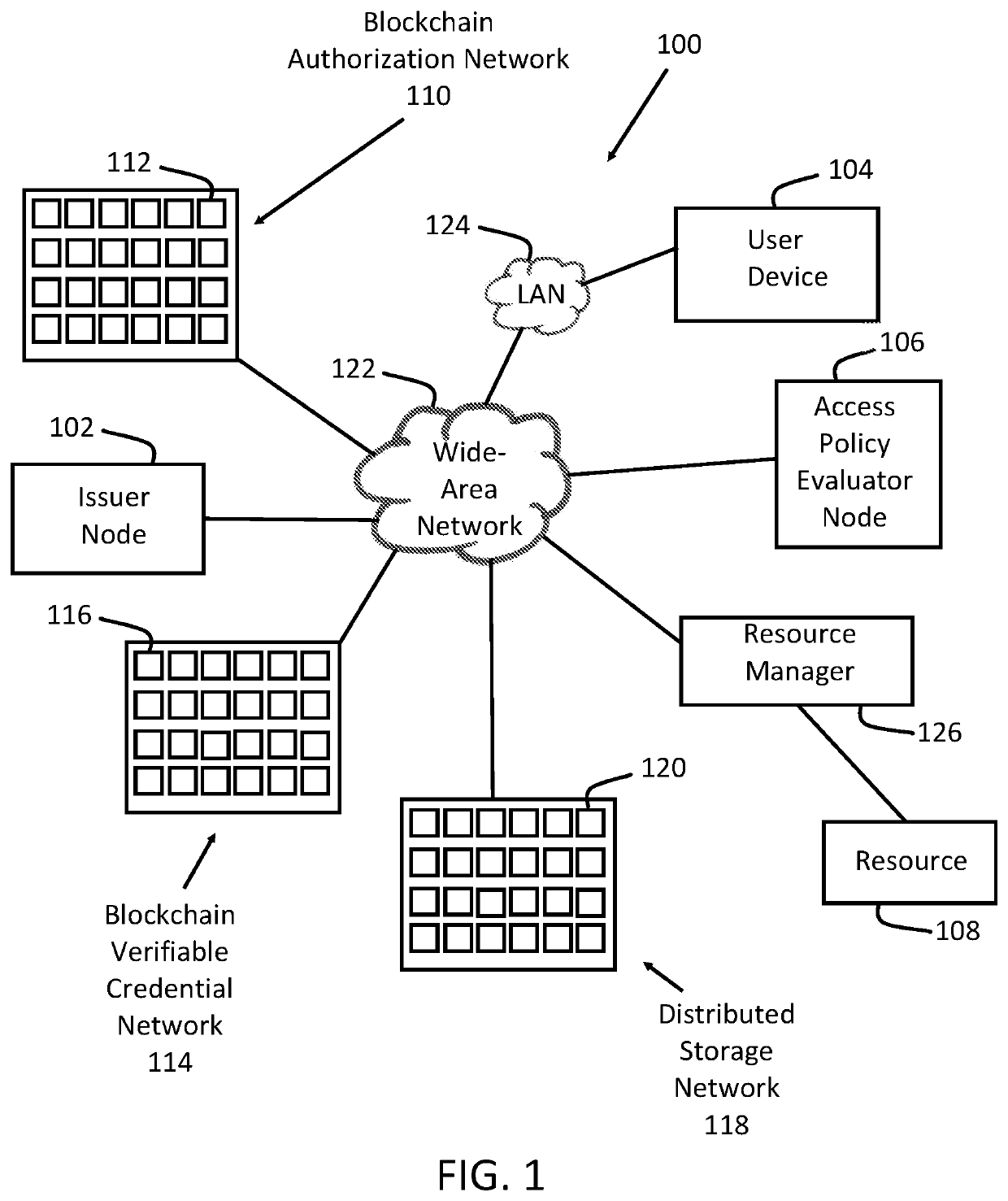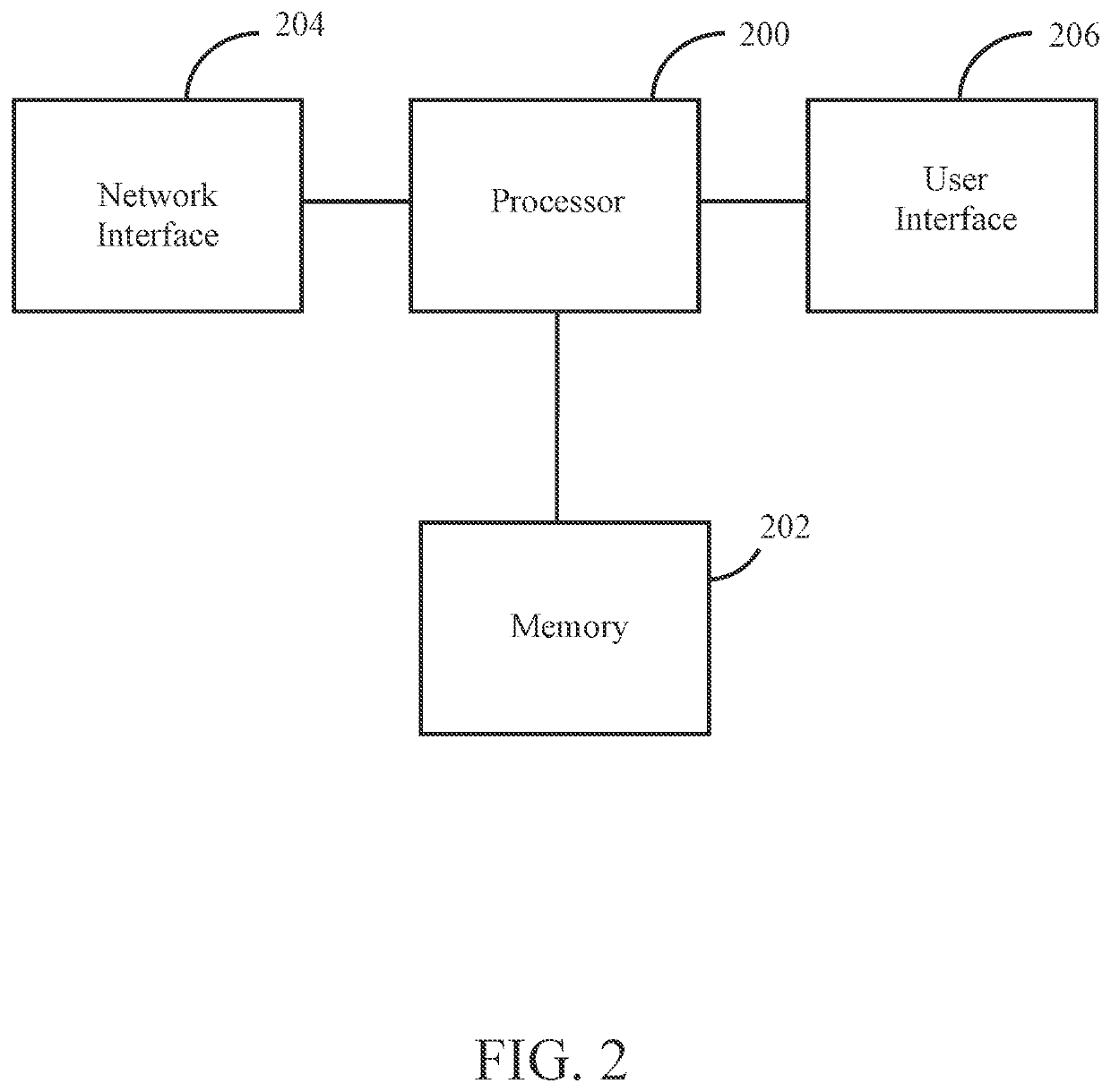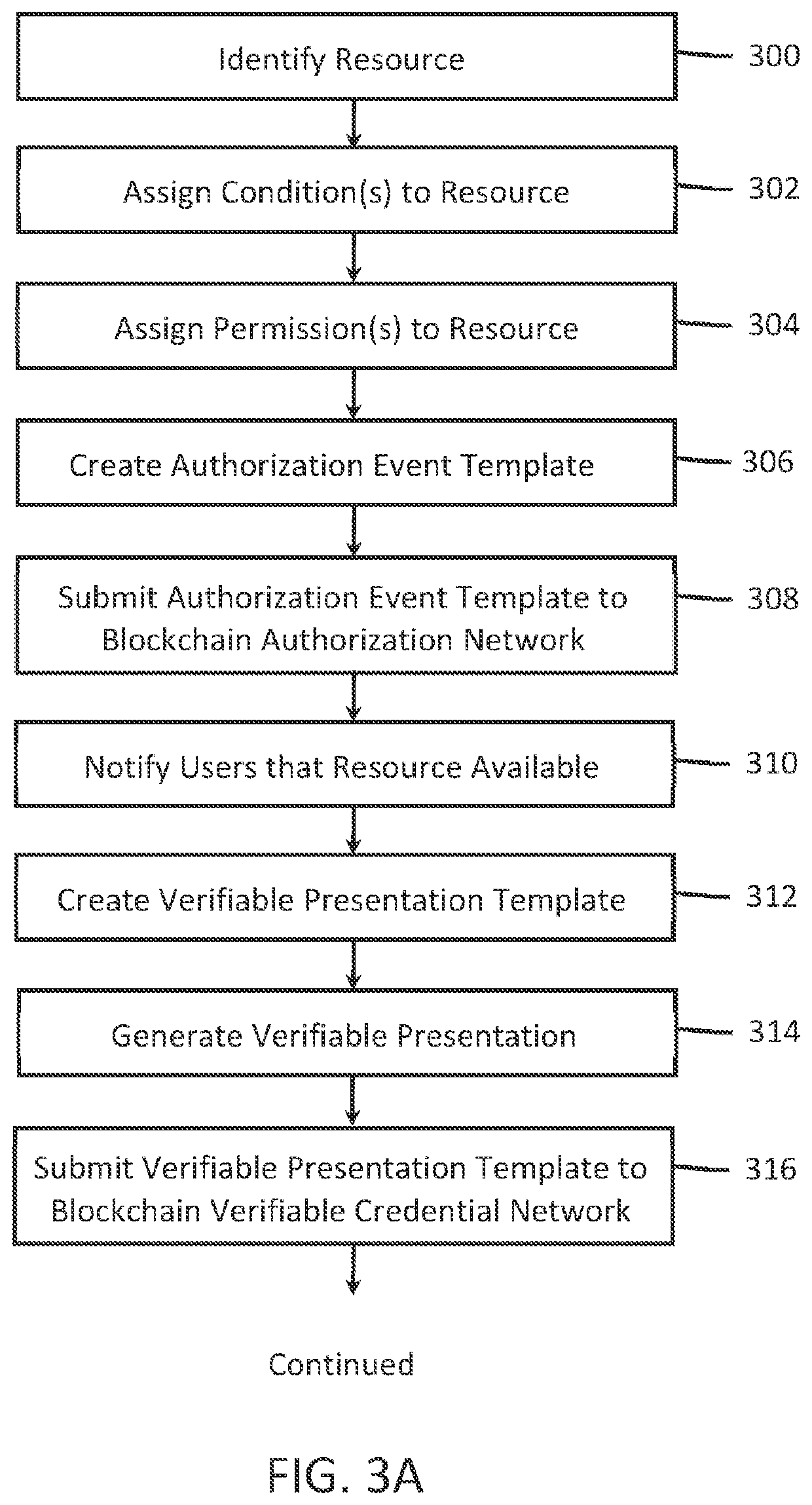Distributed ledger-based ad-hoc system, apparatus and method
a distributed ledger and ad-hoc technology, applied in the field of computer networking, can solve the problems of ad-hoc networks suffering from several drawbacks, information used to select which nodes will participate in ad-hoc communication may not be up to date, and hoc communication typically does no
- Summary
- Abstract
- Description
- Claims
- Application Information
AI Technical Summary
Benefits of technology
Problems solved by technology
Method used
Image
Examples
Embodiment Construction
[0025]Systems, methods and apparatus are described for authorizing access to resources using distributed ledger technology. An issuing entity generates an authorization event template associated with a resource in control of the issuer and posts it to an authorization blockchain network. The authorization event template comprises one or more conditions under which a resource may be accessed and may additionally comprise one or more permissions that prescribe how the resource may be managed. Traditional access control techniques may be used to determine if a requesting entity is authorized to access the resource and, if so, an authorization record is created based on the authorization event template and an identity of the requesting entity. If all of the conditions listed in the authorization record are satisfied, the requesting entity is granted access to the resource. A “resource”, as used herein, comprises any digital computer file in any form, such as a clear or encrypted pdf fil...
PUM
 Login to View More
Login to View More Abstract
Description
Claims
Application Information
 Login to View More
Login to View More - R&D
- Intellectual Property
- Life Sciences
- Materials
- Tech Scout
- Unparalleled Data Quality
- Higher Quality Content
- 60% Fewer Hallucinations
Browse by: Latest US Patents, China's latest patents, Technical Efficacy Thesaurus, Application Domain, Technology Topic, Popular Technical Reports.
© 2025 PatSnap. All rights reserved.Legal|Privacy policy|Modern Slavery Act Transparency Statement|Sitemap|About US| Contact US: help@patsnap.com



